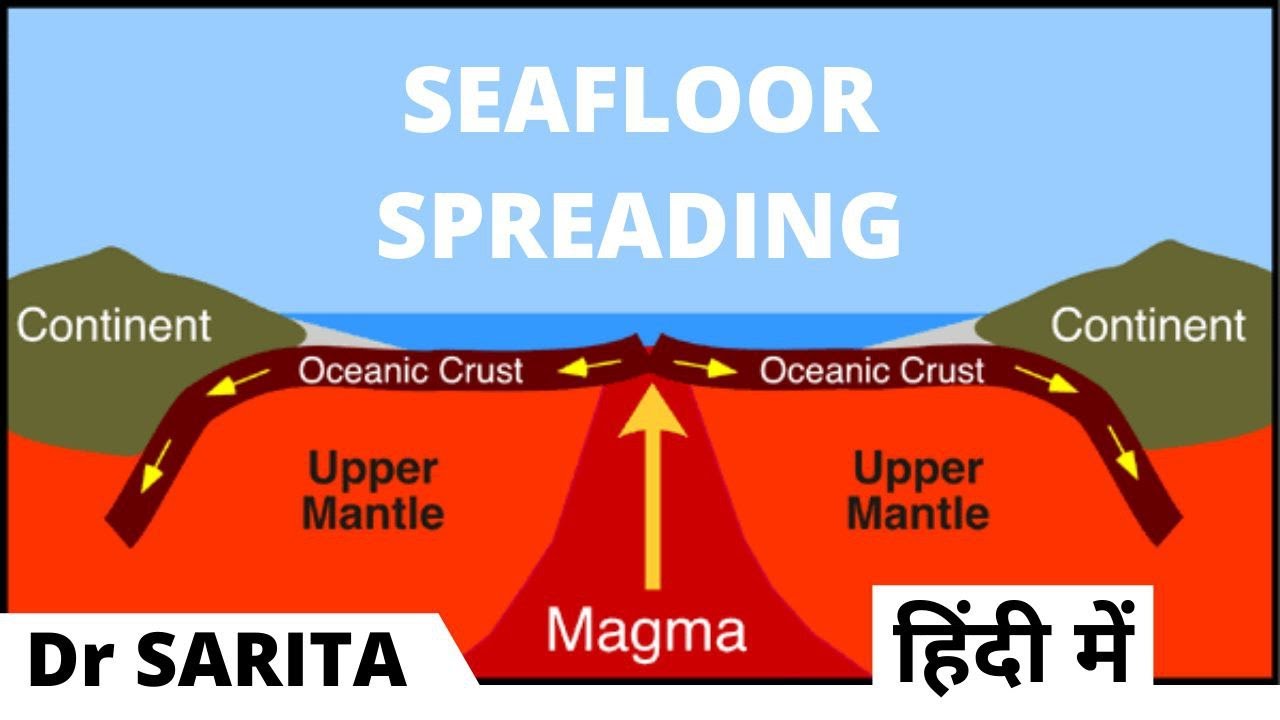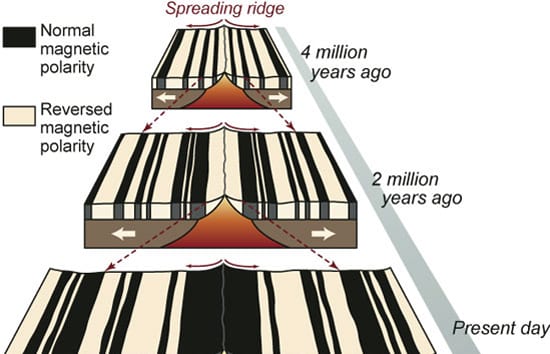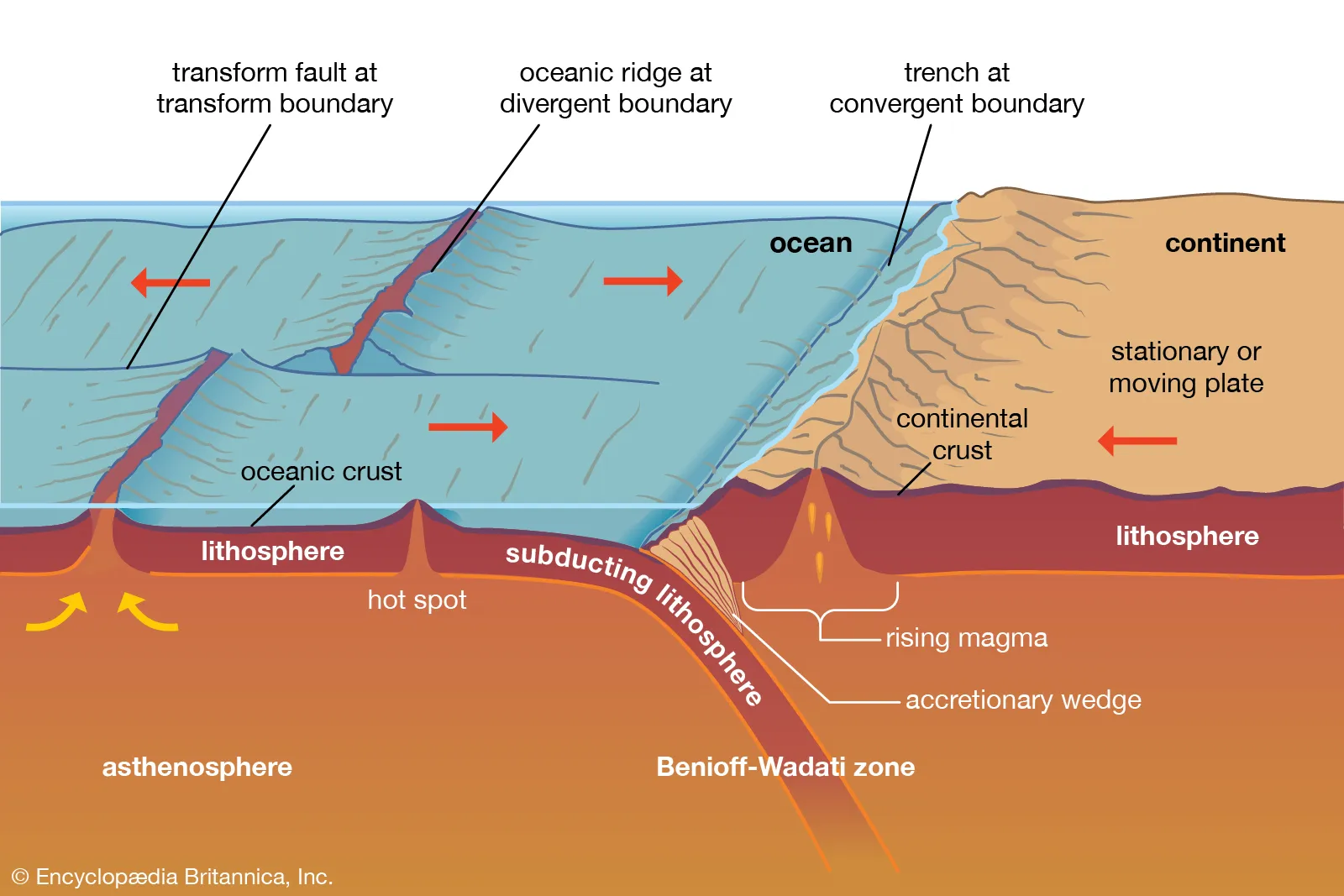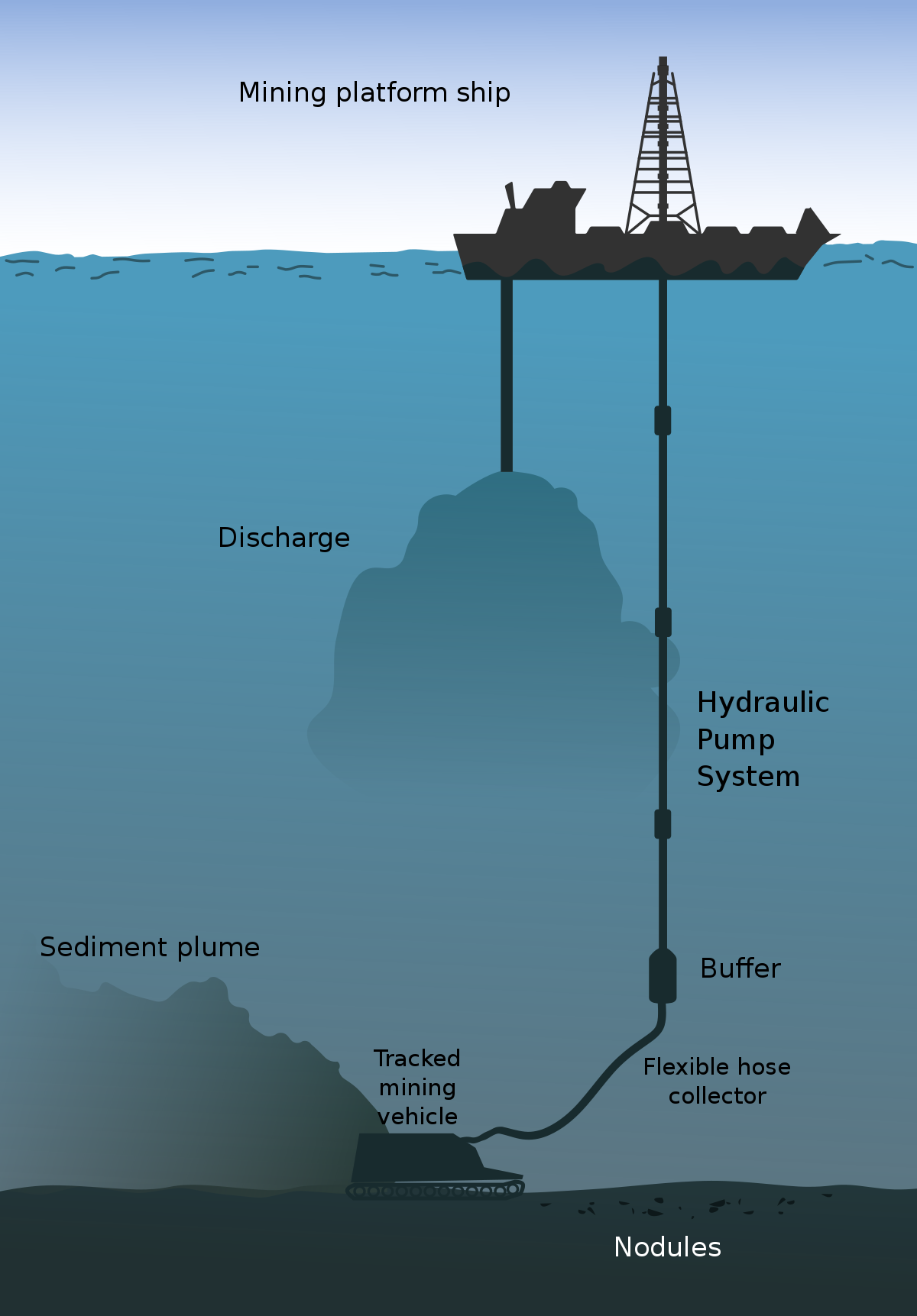Seafloor Spreading
Seafloor Spreading
@@Sonar@@ - a device that bounces sound waves off underwater objects and then records the echoes of these sound waves. the time it takes for the echo to arrive indicates the distance of the object
Sea floor spreading is the process that continually adds new material to the ocean floor while pushing older rocks away from the ridge
- Pushes new material up, separates older rocks
Sea floor spreading was discovered by Harry Hess in the 1960’s
Mid-ocean ridges are the longest chain of mountains in the world --- these are divergent plate boundaries
Ocean floor moves like a conveyor belt carrying the continents with it
New ocean floor forms along cracks in the ocean crust as molten material erupts from the mantle spreading out and pushing older rocks to the side of the cracks
New ocean floor is continually added by the process of seafloor spreading

Evidence for Seafloor Spreading
Evidence from Molten Material
- Rocks shaped like pillows (rock pillow) show that molten material has erupted again and again from cracks along the mid-ocean ridge and cooled quickly
- shows how fast the mantle cooled
Evidence from Magnetic Stripes
- Rocks that make up the ocean floor line in a pattern of magnetizes stropes which hold a record of the reversals in Earth’s magnetic field.
- New rocks align with North and South poles. Tells up direction of Earth’s magnetic poles (changes from time to time)

Evidence From Drilling Samples
Core samples from the ocean floor show that older rocks are found farther from the ridge; youngest rocks are in the center of the ridge
Subduction
Subduction is the process by which the ocean floor sinks beneath a deep-ocean trench and back into the mantle;
It allows part of the ocean floor to sink back into the mantle
Two plates come together, and one slides under the other
- Oceanic crust slides below the continental crust because the more dense piece of crust goes under the less dense.
- The Mariana Trench is an example of a subduction zone
A deep ocean trench occurs at subduction zones.
- deep underwater canyons form where oceanic crust bends downward
The lithosphere gets shoved into the asthenosphere, the lithosphere gets melted, and becomes part of the mantle convection cycle

